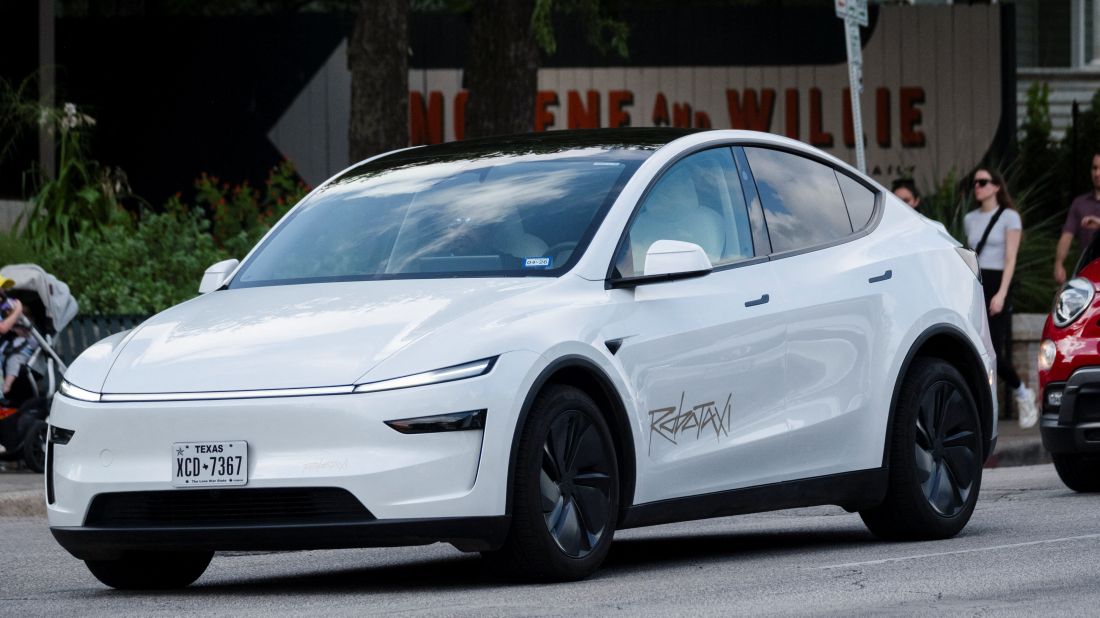Tesla’s Self-Driving Ride Begins in Austin with Human Monitors and Limited Routes
A Bold First Step Toward the Future of Autonomous Travel
Tesla has officially begun testing its much-anticipated self-driving taxi service in Austin, Texas. Marking a significant milestone in the company’s autonomous vehicle journey, the service, dubbed Robotaxi, launched quietly over the weekend, offering rides to a select group of early users within a limited area of the city. While it’s far from a full-scale rollout, the initiative represents a meaningful step toward Tesla’s long-promised vision of a self-driving future.
Exclusive Access with Strict Limits
Only a handful of invited guests were allowed to book rides using Tesla’s new Robotaxi app. The vehicles, all Model Y SUVs equipped with advanced software, operated within a geofenced section of Austin. Safety drivers were seated in the front passenger seat, and usage was limited during inclement weather — a precaution that highlights the system’s current limitations.
Riders received a flat fare of $4.20 per trip, a quirky nod to Elon Musk’s favorite sci-fi novel, The Hitchhiker’s Guide to the Galaxy. But despite the lighthearted pricing, the stakes are high, as Tesla seeks to prove its system’s capability in the real world.
Tesla’s Larger Vision for Robotaxis
Tesla’s long-term goal is to build a vast network of fully autonomous vehicles, allowing car owners to earn passive income by letting their Teslas operate as Robotaxis while they work, sleep, or relax. Musk has envisioned a future where a fleet of self-driving vehicles roam cities, picking up passengers without human intervention.
Eventually, Tesla plans to introduce the Cybercab, a two-door, steering-wheel-free vehicle designed specifically for autonomous ride-hailing. But for now, the limited Austin pilot relies on familiar-looking Model Ys enhanced with Tesla's Full Self-Driving (FSD) software.
High Expectations Meet Skepticism
Tesla’s $1 trillion market valuation is largely tied to investor belief in its self-driving technology. This pilot program will be the first real test of whether Tesla’s AI-based approach — relying heavily on cameras — can deliver on those expectations.
However, not everyone is convinced. Industry analysts and competitors point out that Tesla lags behind other companies already offering commercial autonomous services. Paul Miller, a tech industry analyst, noted that Tesla’s launch is still far behind what some rivals have already achieved.
Unlike Tesla, companies such as Waymo and Zoox use a combination of cameras, radar, and lidar for greater accuracy and safety, especially in poor visibility conditions. Tesla’s camera-only system has drawn criticism for its vulnerability in low-light or bad weather situations, a concern currently under investigation by the National Highway Traffic Safety Administration.
Rising Competition and Regulatory Challenges
Austin has become a testing ground for multiple autonomous vehicle developers. Alongside Tesla, companies like Waymo, Zoox, Volkswagen, and Avride are actively experimenting with driverless technology in the city.
Waymo, owned by Google’s parent company, already provides over 250,000 autonomous rides per week across several major cities including Austin, Phoenix, Los Angeles, and San Francisco. It also has plans to expand to Atlanta, Miami, and Washington, D.C., and is pushing for regulatory approval in New York City.
Despite being based in Texas — a state generally supportive of autonomous technology — Tesla has faced political pushback. A group of state lawmakers recently urged the company to delay its Robotaxi launch until new regulations take effect, citing concerns over public safety and transparency.
Tesla’s Sales Slump and Strategic Shift
The rollout of the Robotaxi service also comes at a time when Tesla is grappling with declining global sales. Earlier in the year, the company pledged to release a more affordable vehicle model by the end of June to reignite interest and boost market share. However, as the month nears its end, no prototype or order process has been revealed.
Amid this slowdown, autonomous services offer Tesla a potential new revenue stream — and a narrative shift. By embracing Robotaxi technology, Tesla aims to remain at the forefront of automotive innovation while generating investor excitement during a turbulent sales period.
The Human Element of Autonomy
Interestingly, many of those who tested the Robotaxi service were Tesla enthusiasts active on social media. Videos shared by riders showcased real-time experiences, including walking several blocks to meet the summoned car and riding with Tesla employees present in the front seat.
“This is a historic moment,” remarked one user as he boarded a Robotaxi. While the technology is clearly still under close monitoring, the sense of occasion among early adopters was unmistakable.
A Future That Still Faces Obstacles
Despite the excitement, Tesla’s vision for widespread autonomous ride-hailing faces significant challenges — from regulatory frameworks and political opposition to public skepticism and fierce competition. Musk’s polarizing public image and political affiliations have also influenced consumer sentiment, particularly among the electric vehicle market’s core demographics.
Tesla remains committed to its software-first, camera-only approach to autonomy. While this may offer cost advantages over competitors with more complex sensor arrays, many experts question whether this strategy is robust enough for broad deployment.
Still, if Tesla can overcome these obstacles, refine its system, and scale effectively, the Robotaxi initiative may ultimately transform both personal transportation and the ride-hailing industry.
Conclusion
Tesla’s limited Robotaxi launch in Austin is not the revolution Elon Musk has promised — yet. But it’s a meaningful beginning. With technology still under development, regulations evolving, and public trust hanging in the balance, Tesla’s path to autonomy remains steep and uncertain. What’s clear, however, is that the journey has officially begun — and all eyes are on what comes next.
